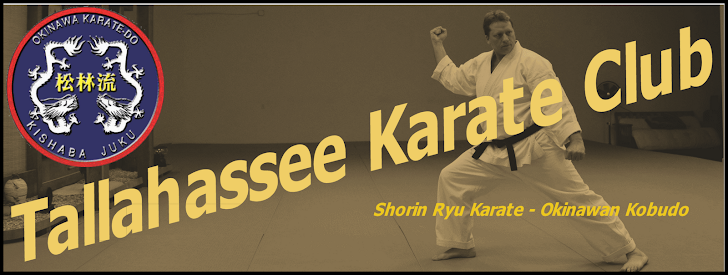Sunday, January 08, 2023
New Year's Day Training, 2023
We had a great turnout for the New Year's Day training! It was a great start to the year with some Kihon and Kata. Looking forward to whatever this year brings!
2022 - End of the Year Recap
It's the end of another year. We trained at the dojo for most of the year, with an Omicron wave at the beginning of the year and a few weeks of Virtual training, thrown in for good measure. We are an aging group, which means our training is not nearly as vigorous as it was just a few years ago. We maintain, and hopefully, improve with age, though.
Throughout the year, we focused on Naihanchi, and the other Kata. We continue to work on employing the principles of a good naihanchi stance, relaxed joints, maintaining our centerline, evenly distributed stances, connecting our elbows, and extending our technique. We also worked a lot on Shirotaru no Kun and Kishaba Sensei's Kata, wich we just call Kishaba Kata.
This was a sad year, as Curtis McVey passed away, early on. I will be forever grateful for his many trips to Okinawa to train with Sensei Shinzato, sharing what he learned through video, writings, and visits to our Dojo, over the years since 2010, and publishing a book about Sensei's karate methods.
I was happy that a new person joined us for training in 2022, and was pleased to see the return of one of our long time students at the end of the year, while on break from College.
I hope that 2023 brings some new students into the dojo, continued good health and good training for all.
Sunday, January 02, 2022
2022 - The Start
Starting out the new year with remote training, again. I thought we were done with this, but since the Covid rates are so high in Leon County, it seems prudent to meet virtually again, until the rates decline, once more.
2021 was pretty good for the dojo. We started in-person training in March, and stayed at it throughout the year. On the average, we had 3-4 people per session. We had our 15 year celebration special training, and we had a student promote to Shodan.
Toward the end of the year, we focused on Shirotaru no Kun. It was challenge, but I think everyone has it now.
The new year always brings new possibilities. I hope, for Tallahassee Karate Club members, it will bring good health and good training!
Saturday, December 18, 2021
Naihanchi Points
Why would I do such a thing?
Because my perception of Naihanchi points has changed, like my perception of a lot of the principles we practice in Kishaba Juku.
I had written about how there are places in the Kata where you are coiled up, like a spring, and ready to go, much like the beginning of Naihanchi, or the places where you step across.
What I want to say about it now is a little different.
Naihanchi points are the places in the movement of the Kata where your feet come together, then move apart. When you are at these places, you are ready to move in any direction. You can change your mind. The big difference now, is that when I think about Naihanchi Points, I think about maintaining relaxed koshi, instead of coiled, springlike (tense) koshi. I also think about maintaining my centerline over my center of gravity, keeping my elbows connected to my koshi, and then extending the technique as I move into the next position.
Naihanchi points are in all Kata, but it is hard to find them if you practice wide stances. Our stances are quite narrow. In fact the heels, are basically, almost on the same line. This is true whether we are doing natural stance, front stance, cat stance, or cross leg stance. If you were to draw an imaginary line on the floor, then stand over it in your stance, the left heel and the right heel would be touching opposite sides of the line.
The use of narrow stances enables the Naihanchi Point principle. If the stances are any wider, you can't bring the feel together into the naihanchi point, and still maintain the same centerline throughout the movement.
The next thing is the position of the hips throughout the movement. Our hips maintain a somewhat open position, maybe 45 degrees. They never transition to a closed (hips completely forward) position at the beginning or end of the movement. This allows a connection on one side of the body, by aligning all the bones, and not creating any place where the connection is lost.


